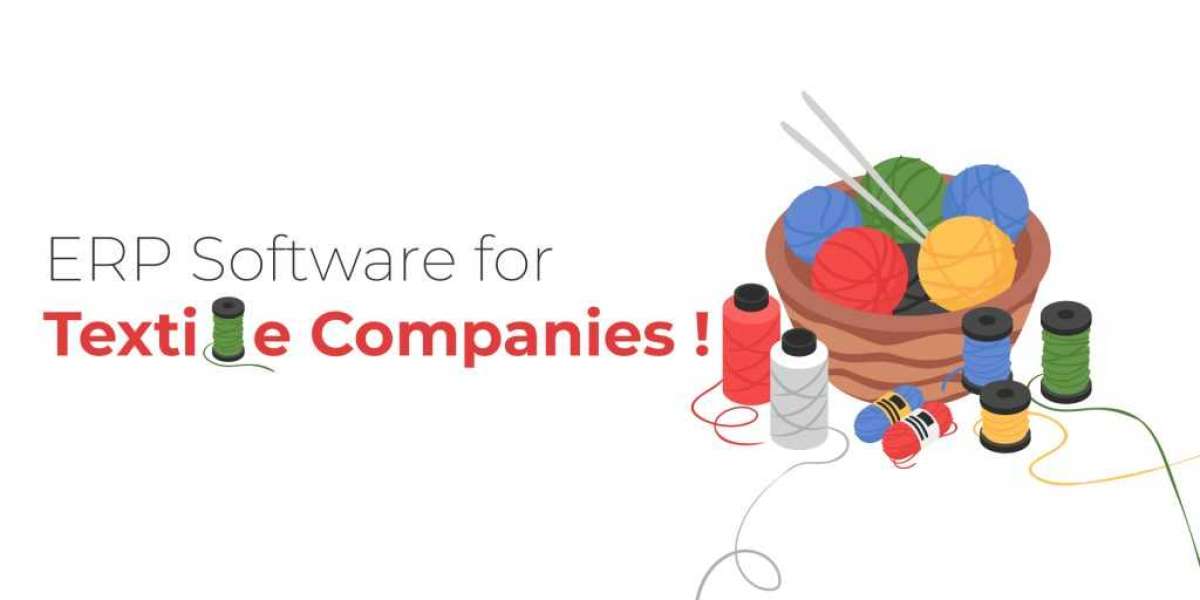Enterprise resource planning, or ERP Software for Textile Companies, has been used in the textile sector for a while. The demand for ERP arose as businesses needed to work more intelligently and reduce data duplication.
ERP officially began when open-loop MRP (Material Requirement Planning) was created in the 1960s.

This MRP was connected to the inventory master file and the bill of materials.
This MRP could release purchase orders, work orders, and rescheduling notices based on the planned order.
The control or checkpoints were this system’s main flaw.
Closed-loop MRP was developed in the 1970s to address these issues. Before creating any form of Purchase or Work Order, this MRP model may assess the capacity requirements.
However, it used to operate separately from the business plan’s financial and marketing aspects.
The 1980s were a time of financial and marketing constraints that led to the development of MRP II to conduct closed-loop MRP.
This led to the development of MRP II in the 1980s, which operated closed-loop MRP under marketing and financial constraints.
As a result, all resources throughout the entire enterprise were working on a single platform for optimization and better planning.
Early ERP systems from the 1990s used a client-server technique in which the client computers had an application installed that could retrieve data from the server.
ERP developed to the point where it was no longer necessary to install client programs in the 2000s due to the development of the internet.
The development of cloud computing and highly sophisticated mobile devices made ERP quicker and more accessible.
Need of ERP Software for Textile Companies
The textile industry is very intricate.
The textile sector sees a lot of change every minute, unlike the automotive industry, where variations of a single car have run on the same manufacturing line for decades.
It joined the trend of new manufacturing methods like Lean and Modular, which have proved successful in the automotive industry.
EERP Software for Textile Companies are necessary to reduce waste and also work in progress and increase operator training initiatives.
The textile industry is proposing numerous solutions, from material handling and monitoring to ERP.
The textile industry has begun to realize the importance of cost control and optimizing enterprise-wide resources owing to increased competition, decreased margins, and shorter timelines.
ERP offers a solution to all of these problems.
ERP elements for the textile sector
- Material Control.
- Distribution and sales.
- Production scheduling
- Production Control.
- Costing.
- Quality Control.
- Accounting and control.
- HR/Payroll.
Implementing ERP in the Textile Industry
In any industry, ERP implementation goes through the following stages.
- The phase of project planning.
- Study of Business Processes (AS IS Phase).
- Enterprise Blue Print Phase (TO BE Phase).
- The first phase of realization iteration
- Development of reports and customization.
- The second iteration of realization.
- Get ready and go live.
Due to the unorganized nature of India’s textile industry, ERP implementations typically take 6 months to complete.
Typically, the textile business struggles with change management, which forces periodic changes to the Core Team of implementation.
ERP Software’s Importance in the Textile Industry
The manufacturing, distribution, channel management, and also sales generation procedures typically involved in the textile business are time-consuming and complex.
Quality control is a crucial step that must be taken from the raw materials to the finished products.
Therefore, it is crucial to investigate a practical solution that will assist business owners in establishing themselves on the world stage confidently.
Here are a few advantages that ERP offers the textile business specifically.
1. Improved Inventory Control
To help stakeholders acquire the product when they need it, ERP for textiles automates and dynamically manages all stock activities.
It effortlessly connects with the in-store purchase system, which offers real-time updates on the status of the item.
The software also creates insightful real-time reports that include historical information, prices, and quotes to aid in decision-making.
2. Quality Management
The program streamlines the entire production process, increasing the likelihood that the finished goods will meet quality standards.
It maintains quality control throughout the manufacturing process to prevent the production of defective products and assure compliance with consumer requests and legal requirements.
3. Decreased machine downtime
Establishing a regular program for inspecting the system’s crucial parts and devices prolongs their lifespan and lower downtime.
It also keeps track of internal or external maintenance schedules while keeping track of machine maintenance due dates.
4. Cost savings
To begin with It improves process flow, which lowers labor expenses. Additionally It maintains all labor-related data, including skills, shift schedules, tasks given, and more.
To increase productivity and success, it also oversees an organization’s resources’ efficient and effective deployment.
5. Consumer contentment
Customer loyalty increased and also delivery times for request execution shortened with ERP software.
Better client interactions are greatly aided by having a clearly defined strategy for client exchange.
Ideally, it will respond to the client’s questions right away.
This time frame is shortened to one day, which will significantly affect how clients perceive the association.
Read More Articles:
Questions before your ERP implementation
https://erp-software-uae.ae/blog/2023/01/24/erp-implementation-key-phases-erp-software-in-uae/
How to improve procurement with ERP for Manufacturing industry?
https://erp-software-uae.ae/blog/2023/01/25/erp-for-manufacturing-industry-erp-software-uae/
What is Cloud ERP?
https://erp-software-uae.ae/blog/2023/01/27/what-is-cloud-erp-erp-software-uae/







